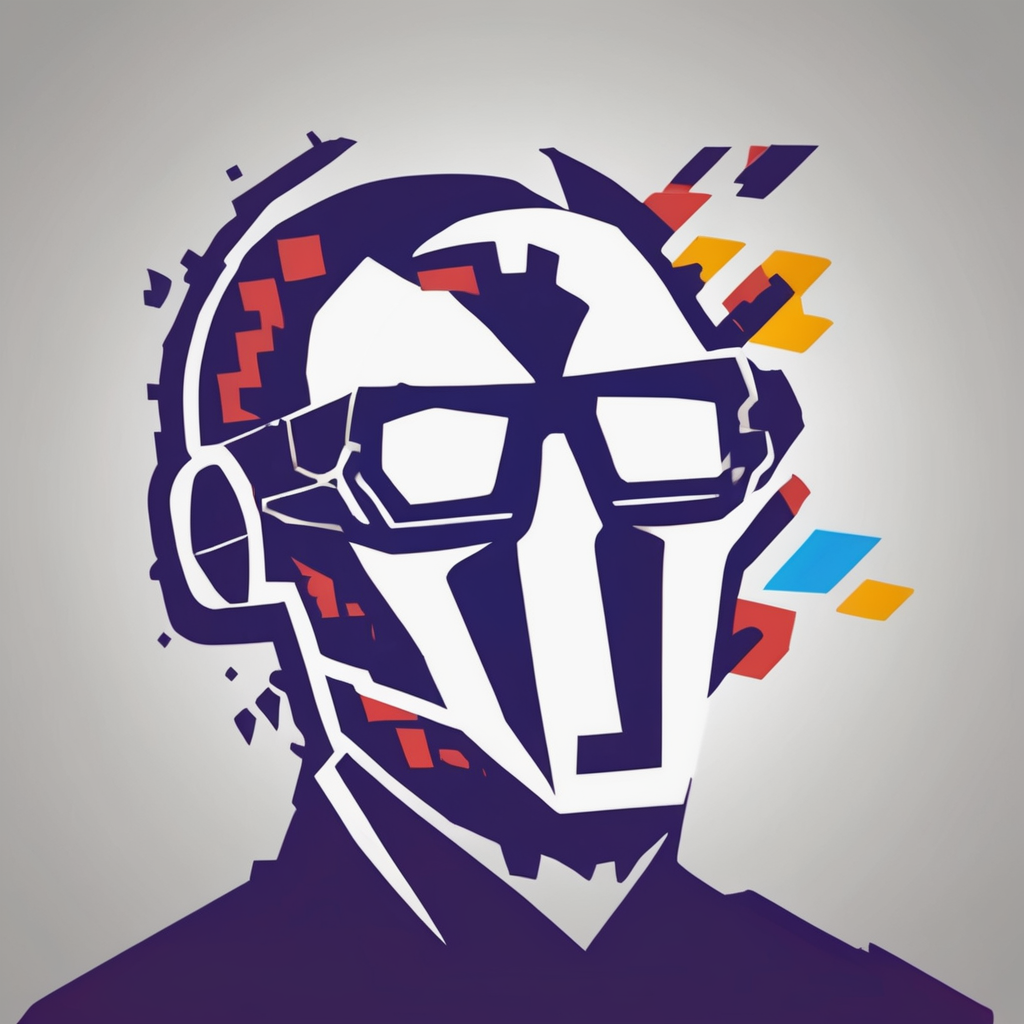Unlocking the Future of Secure Remote Collaboration: Key Strategies for Developing an AI-Powered Platform
In the modern workplace, remote collaboration has become the new norm, and the integration of artificial intelligence (AI) is revolutionizing how teams work together. However, this shift also brings a host of challenges, particularly in the areas of security, data privacy, and effective collaboration. Here’s a deep dive into the key strategies for developing an AI-powered platform that enhances remote collaboration while ensuring robust security and productivity.
The Role of AI in Remote Collaboration
AI is no longer just a buzzword; it is a transformative force in the way businesses operate. When it comes to remote collaboration, AI can significantly enhance the efficiency, productivity, and overall experience of remote teams.
Automating Routine Tasks
AI can take over routine and repetitive tasks, allowing team members to focus on more creative and innovative work. For instance, tools like Microsoft Power Apps and Adobe Sensei automate tasks such as data entry, report generation, and even provide intelligent suggestions to streamline workflows[1].
Advanced Collaboration Tools
AI-powered collaboration tools are making remote work more intuitive and effective. Platforms like Slack, Google Workspace, and FigJam use AI to analyze communication patterns, optimize project management, and provide personalized recommendations to improve workflow efficiency. For example, Slack’s AI-driven notifications help reduce noise and ensure that important messages are not missed[1].
Real-Time Decision Making
AI agents can make autonomous decisions, accelerating the decision-making process in remote teams. According to Gartner, by 2028, at least 15% of daily professional decisions will be made autonomously by AI agents, which will be particularly beneficial in managing complex projects and automating customer experiences[3].
Ensuring Security in AI-Powered Collaboration
While AI offers numerous benefits, it also introduces new security challenges. Here are some strategies to ensure that your AI-powered collaboration platform is secure:
Cybersecurity Measures
- Threat Detection: Implement AI-driven threat detection systems that can identify and mitigate cyber threats in real-time. For example, Anthropic’s Frontier Red Team has shown that current AI models can already assist in a wide range of cybercriminal tasks, highlighting the need for robust cybersecurity measures[4].
- Data Encryption: Use advanced encryption techniques, such as post-quantum cryptography, to protect data from potential quantum computer attacks. Gartner predicts that by 2029, most asymmetric encryption methods will become obsolete due to quantum computing advancements[3].
- Access Control: Implement strict access controls and multi-factor authentication to ensure that only authorized personnel can access sensitive data.
Data Privacy
- Transparent Policies: Ensure that your AI platform has transparent data privacy policies. As Anthropic suggests, companies should publish and adhere to security directives, define protection measures, and publish risk evaluations for each system generation[4].
- Compliance: Use platforms of AI governance to evaluate potential risks, ensure compliance with security and ethical standards, and track the usage and outcomes of AI systems. This can increase customer trust and regulatory compliance scores by up to 30% and 25%, respectively[3].
Building a Data-Driven Collaboration Platform
A data-driven approach is crucial for developing an effective AI-powered collaboration platform.
Machine Learning and Deep Learning
- Predictive Analytics: Use machine learning and deep learning algorithms to predict user behavior, optimize workflows, and provide personalized recommendations. For instance, virtual assistants like those integrated into Google Workspace can use machine learning to improve document drafting and project management[1].
- Real-Time Analytics: Implement real-time analytics to monitor team performance, identify bottlenecks, and make data-driven decisions. This can be achieved through tools that analyze communication patterns and workflow data.
Integrating Virtual Assistants
Virtual assistants powered by AI can significantly enhance the collaboration experience. Here are a few ways to integrate them:
- Task Management: Virtual assistants can help in task assignment, reminders, and follow-ups, ensuring that projects are managed efficiently.
- Communication: Assistants can facilitate smarter notifications, reduce noise, and ensure that critical messages are not missed.
- Resource Allocation: They can analyze team strengths and allocate tasks accordingly, optimizing the use of human resources.
Overcoming Challenges in Remote Collaboration
Despite the benefits, remote collaboration comes with its own set of challenges.
Human Machine Interaction
- User Experience: Ensure that the AI-powered platform is user-friendly and intuitive. The spatial computing technology, for example, is transforming team collaboration by making remote meetings as engaging as in-person ones. Platforms like Meta’s virtual collaboration spaces are redefining how teams interact[2].
- Training and Education: Provide continuous training and education to remote workers on how to effectively use AI tools. Educational institutions can play a crucial role in preparing the workforce for this new era of collaboration.
Managing Remote Teams
- Trust and Transparency: Build trust within remote teams by ensuring transparency in communication and decision-making processes. AI can help in this by providing real-time updates and insights.
- Cultural Alignment: Foster a culture that values remote work and encourages open communication. This can be achieved through regular virtual meetings and team-building activities.
Practical Insights and Actionable Advice
Here are some practical tips for developing and implementing an AI-powered collaboration platform:
Start Small
- Begin with pilot projects to test the efficacy of AI tools in your specific work environment.
- Gradually scale up the implementation based on the feedback and results from the pilot projects.
Choose the Right Tools
- Select tools that are specifically designed for remote collaboration and integrate well with your existing systems.
- Consider tools like GitHub Copilot, IBM Watson, and Salesforce Customer 360, which offer advanced AI capabilities[1].
Focus on Security
- Prioritize security from the outset. Implement robust cybersecurity measures and ensure that data privacy policies are transparent and adhered to.
- Regularly update and patch your systems to protect against emerging cyber threats.
The future of remote collaboration is undoubtedly tied to the potential of AI and other emerging technologies. By leveraging AI, businesses can create more intuitive, personalized, and efficient collaboration platforms.
Key Takeaways
- AI Automation: Automate routine tasks to enhance productivity and focus on innovation.
- Advanced Collaboration Tools: Use AI-powered tools to optimize project management and communication.
- Security and Privacy: Ensure robust cybersecurity measures and transparent data privacy policies.
- Data-Driven Decision Making: Use machine learning and deep learning to make data-driven decisions.
- Human Machine Interaction: Focus on creating user-friendly interfaces and providing continuous training.
As Richard Beck, an expert in remote work, might say, “The key to successful remote collaboration is not just about the tools you use, but how you integrate them into your workflow to enhance human interaction and productivity.”
In this new era of remote work, embracing AI and other technologies is not just an option, but a necessity for staying competitive and ensuring the security and productivity of your remote teams.
Detailed Bullet Point List: Key Strategies for Developing an AI-Powered Collaboration Platform
- Automate Routine Tasks:
- Use AI to handle repetitive tasks such as data entry and report generation.
- Implement tools like Microsoft Power Apps and Adobe Sensei to automate workflows.
- Implement Advanced Collaboration Tools:
- Use AI-powered platforms like Slack, Google Workspace, and FigJam to optimize project management.
- Analyze communication patterns to provide personalized recommendations.
- Ensure Real-Time Decision Making:
- Use AI agents to make autonomous decisions.
- Accelerate decision-making processes in managing complex projects and automating customer experiences.
- Prioritize Cybersecurity:
- Implement AI-driven threat detection systems.
- Use post-quantum cryptography to protect data from quantum computer attacks.
- Focus on Data Privacy:
- Ensure transparent data privacy policies.
- Use AI governance platforms to evaluate potential risks and ensure compliance with security and ethical standards.
- Integrate Virtual Assistants:
- Use virtual assistants to manage tasks, facilitate communication, and allocate resources.
- Implement tools that provide smarter notifications and reduce noise.
- Enhance Human Machine Interaction:
- Ensure user-friendly interfaces.
- Provide continuous training and education on using AI tools effectively.
- Manage Remote Teams Effectively:
- Build trust through transparent communication and decision-making processes.
- Foster a culture that values remote work and encourages open communication.
Comprehensive Table: Comparison of AI-Powered Collaboration Tools
| Tool | Key Features | Benefits | Security Measures |
|---|---|---|---|
| Microsoft Power Apps | Automates workflows, simplifies app creation | Enhances productivity, reduces manual errors | Multi-factor authentication, data encryption |
| Adobe Sensei | Automates repetitive tasks, provides intelligent suggestions | Focuses on innovation and creativity, streamlines workflows | Access control, regular updates and patches |
| Slack | AI-driven notifications, reduces noise | Improves communication efficiency, reduces missed messages | Threat detection, transparent data privacy policies |
| Google Workspace | AI-powered document drafting, project management | Enhances collaboration, provides real-time analytics | Post-quantum cryptography, AI governance platforms |
| FigJam | Organizes ideas into actionable workflows | Optimizes project management, provides personalized recommendations | Multi-factor authentication, access control |
| GitHub Copilot | AI-based coding assistance | Accelerates coding processes, reduces errors | Regular updates and patches, threat detection |
| IBM Watson | Integrates data-driven decision making | Enhances decision-making processes, automates complex tasks | Transparent data privacy policies, AI governance platforms |
| Salesforce Customer 360 | Provides personalized customer interactions | Enhances customer experience, automates customer service | Access control, multi-factor authentication |
By adopting these strategies and leveraging the right tools, businesses can unlock the full potential of AI in remote collaboration, ensuring a secure, productive, and future-ready work environment.











